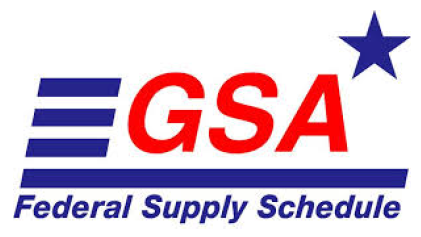In the realm of business and government contracting, a Request for Information (RFI) plays a critical role in the procurement process. RFIs are used by organizations to gather information about potential solutions, vendors, and products before proceeding to more formal procurement steps like a Request for Proposal (RFP) or Request for Quotation (RFQ). Understanding and responding effectively to RFIs can position your business favorably and increase your chances of securing contracts. This comprehensive guide explores the best practices for responding to RFIs effectively.
What is an RFI?
A Request for Information (RFI) is a preliminary document used by organizations to collect written information about the capabilities of various suppliers. It is not a solicitation for a bid, but rather a tool to understand what products and services are available, and which vendors can supply them. RFIs help organizations refine their requirements and prepare for subsequent procurement steps.
Key Components of an RFI
An RFI typically includes:
- Introduction: An overview of the organization and the purpose of the RFI.
- Scope of Work: A description of the project or requirement.
- Questions for Vendors: Specific questions aimed at gathering information about the vendor’s capabilities, products, or services.
- Submission Instructions: Guidelines on how to respond, including deadlines and formatting requirements.
Importance of Responding to RFIs
Responding to an RFI offers several benefits:
- Establish Relationships: Build rapport with potential clients or government agencies.
- Showcase Expertise: Demonstrate your understanding of the industry and highlight your company’s capabilities.
- Influence Future RFPs: Shape the requirements and criteria of future procurement processes by providing valuable insights.
- Market Research: Gain insights into market demands and competitor offerings.
Best Practices for Responding to RFIs
1. Understand the Purpose
Before crafting your response, understand the purpose of the RFI. Carefully read the document to grasp the client’s needs, goals, and the problem they are trying to solve. This understanding will allow you to tailor your response to address their specific concerns effectively.
2. Follow the Instructions
Adhere strictly to the submission instructions provided in the RFI. This includes formatting requirements, response length, and submission deadlines. Failing to comply with these guidelines can result in your response being disqualified or overlooked.
3. Provide Clear and Concise Information
Respond to each question clearly and concisely. Avoid jargon and ensure your responses are easy to understand. Use bullet points and headings to organize your information and make it easier for the reader to navigate.
4. Highlight Relevant Experience and Capabilities
Showcase your relevant experience and capabilities by providing examples of past projects or case studies. Highlight how your solutions have successfully addressed similar challenges in the past. This builds credibility and demonstrates your expertise.
5. Tailor Your Response
Customize your response to align with the client’s specific needs and industry. Avoid generic responses that could apply to any RFI. Instead, provide tailored solutions that show you have thoroughly considered their unique requirements.
6. Include Visuals and Supporting Materials
Incorporate visuals such as charts, graphs, and images to support your response. Visuals can help convey complex information more effectively and make your response more engaging. Additionally, include any relevant supporting materials, such as brochures or technical specifications.
7. Proofread and Edit
Ensure your response is free of grammatical and typographical errors. A polished, professional response reflects well on your organization. Consider having multiple team members review the document before submission to catch any errors and improve clarity.
8. Showcase Innovation
Highlight any innovative solutions or technologies your company offers that could provide added value to the client. Innovation can set you apart from competitors and demonstrate your forward-thinking approach.
9. Address Potential Concerns
Anticipate any potential concerns the client might have and address them proactively in your response. This demonstrates your understanding of the project’s challenges and your ability to mitigate risks.
10. Follow Up
After submitting your response, follow up with the client to confirm receipt and express your interest in the project. This can help keep your company top of mind and demonstrate your eagerness to engage further.
Detailed Steps for Responding to an RFI
Step 1: Initial Review and Team Assembly
Upon receiving an RFI, conduct an initial review to understand its requirements and scope. Assemble a team of relevant stakeholders, including subject matter experts, to contribute to the response.
Step 2: Assign Responsibilities
Assign specific sections of the RFI to team members based on their expertise. Ensure everyone understands their responsibilities and the deadlines for their contributions.
Step 3: Gather Information
Collect all necessary information, including company credentials, case studies, and technical data. Ensure the information is current and relevant to the RFI.
Step 4: Draft Responses
Draft responses to each section of the RFI, focusing on clarity and relevance. Use the questions provided in the RFI as a guide to structure your responses.
Step 5: Review and Revise
Review the draft responses for accuracy, completeness, and coherence. Make revisions as necessary to improve clarity and alignment with the client’s needs.
Step 6: Final Review and Submission
Conduct a final review of the entire document to ensure it meets all requirements and is free of errors. Submit the response according to the instructions provided in the RFI.
Common Mistakes to Avoid
1. Ignoring Instructions
Ignoring or overlooking submission instructions can result in disqualification. Always follow the guidelines provided in the RFI.
2. Providing Generic Responses
Generic responses that do not address the specific needs of the client are less likely to be successful. Tailor your responses to the client’s unique requirements.
3. Lack of Clarity
Unclear or overly complex responses can confuse the client and detract from your message. Ensure your responses are clear and concise.
4. Overloading with Information
While it is important to provide detailed information, overloading the response with unnecessary details can be overwhelming. Focus on providing relevant and impactful information.
5. Missing Deadlines
Missing submission deadlines can disqualify your response. Plan your response process carefully to ensure timely submission.
Conclusion
Responding to an RFI effectively requires a strategic approach and attention to detail. By understanding the purpose of the RFI, following instructions, providing clear and concise information, and highlighting your relevant experience, you can position your business favorably in the procurement process. Implementing these best practices will not only improve your chances of advancing to the next stage but also help you build valuable relationships with potential clients.
Remember, an RFI is an opportunity to showcase your expertise and influence future procurement decisions. Take the time to craft a thoughtful and tailored response, and you may find yourself well-positioned for future opportunities.
If you’re looking for personalized guidance on responding to RFIs or need help crafting a winning response, book your free 30-minute consultation call with our experts today. Let us help you navigate the RFI process with confidence and increase your chances of success.



